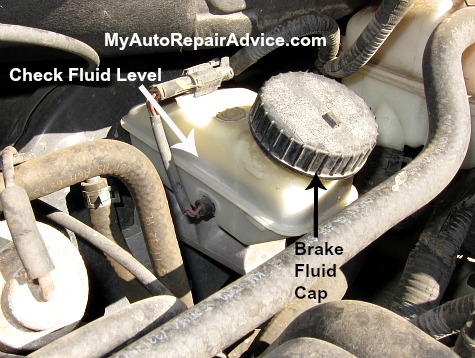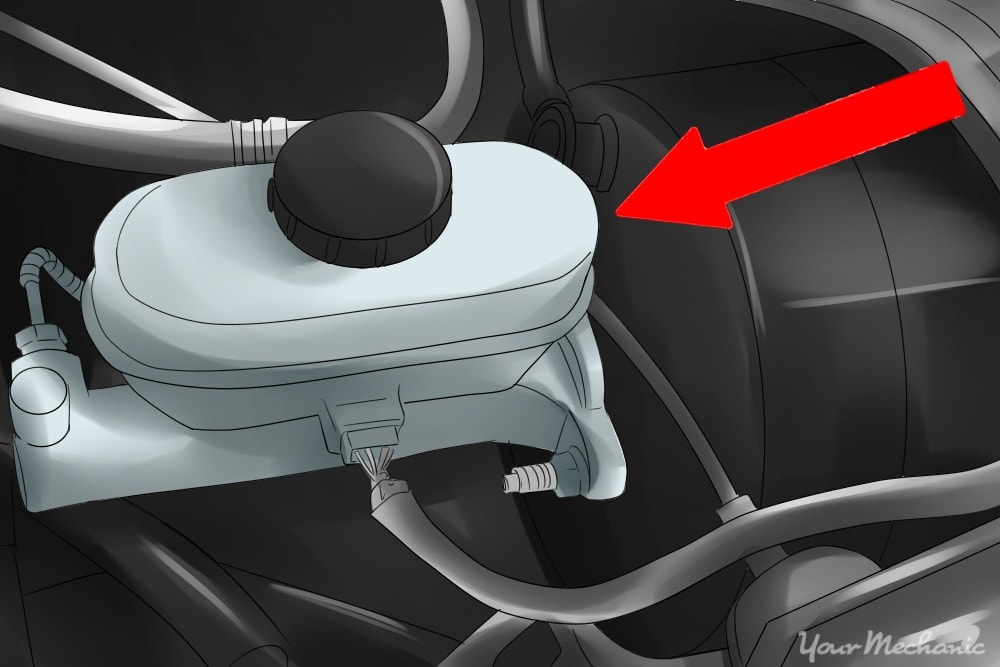How to Add Brake Fluid
To add brake fluid, locate the reservoir cap, remove it, and pour fluid until full. Brake fluid is essential for maintaining your vehicle’s braking system’s performance and safety.
Regularly checking and adding brake fluid when needed can prevent potential brake failures, ensuring safe driving. We will discuss the importance of brake fluid, signs of low brake fluid levels, steps to add brake fluid, and tips for ensuring your brakes work efficiently.
By following these guidelines, you can help maintain your vehicle’s brakes and ensure your safety on the road.
Importance Of Brake Fluid
Brake fluid is a crucial component in the braking system of any vehicle. It plays a vital role in ensuring that the brakes function effectively, providing the necessary stopping power when needed. Without proper levels of brake fluid, the brake system may fail, leading to potentially dangerous driving conditions. Understanding the importance of brake fluid is essential for every vehicle owner. Let’s dive into the details of what brake fluid is and why it is essential.
What Is Brake Fluid
Brake fluid is a specially formulated hydraulic fluid that transmits the force created when you press the brake pedal to the wheel brake calipers. It is designed to operate under high temperatures and high pressure, ensuring responsive braking performance. The most common types of brake fluid are DOT 3, DOT 4, and DOT 5, each with different boiling points and viscosity ratings.
Why Brake Fluid Is Important
- Transfer of force: Brake fluid facilitates the transfer of force from the brake pedal to the brakes, enabling efficient stopping power.
- Heat resistance: It has a high boiling point, preventing the formation of vapor bubbles, which could compromise braking efficiency.
- Corrosion prevention: Brake fluid protects the brake system components from corrosion, ensuring the longevity of the braking system.
- Seal lubrication: It lubricates the seals within the brake system, preventing leaks and maintaining optimal performance.
- Safety: Proper levels of brake fluid are crucial for safe driving, ensuring that the vehicle can come to a secure stop when necessary.
It is important to regularly check and maintain the level and condition of brake fluid in your vehicle to ensure the safety and efficiency of the braking system.

Credit: www.myautorepairadvice.com
Safety Precautions
Before adding brake fluid to your vehicle, it’s crucial to prioritize safety precautions to ensure a smooth and hazard-free process.
Protective Gear
Wear protective gear such as gloves and safety goggles to shield yourself from potential splashes or spills.
Choosing The Right Work Area
Select a well-ventilated work area with ample lighting to ensure clear visibility while working on your vehicle.
Step-by-step Guide
Step-by-Step Guide:
Gather The Necessary Tools
Before starting, ensure you have a clean cloth, brake fluid recommended for your vehicle, and safety goggles to protect your eyes.
Locate The Brake Fluid Reservoir
Pop open the hood of your car and locate the brake fluid reservoir, usually positioned near the master cylinder.
Check The Brake Fluid Level
Remove the cap from the reservoir and inspect the current brake fluid level to determine if it’s below the recommended minimum.
Add Brake Fluid
Slowly pour the brake fluid into the reservoir, making sure not to overfill it as it can lead to damage to the braking system.
Test The Brake Pedal
After adding the fluid, test the brake pedal to make sure it feels firm and responsive, indicating that the brakes are working effectively.

Credit: newparts.com
Choosing The Right Brake Fluid
Choosing the right brake fluid is crucial for maintaining the safety and performance of your vehicle’s braking system. Understanding the different types of brake fluid and referring to your vehicle manual can help in selecting the appropriate fluid for your car.
Understanding Brake Fluid Types
Brake fluids can be classified into several types, including DOT 3, DOT 4, and DOT 5. Each type has specific characteristics and is suitable for different vehicle models and driving conditions.
- DOT 3: Suitable for most cars and provides good performance at a low cost.
- DOT 4: Offers a higher boiling point and is recommended for vehicles with ABS systems or operating under high-stress conditions.
- DOT 5: Silicone-based fluid that is less hygroscopic, but not compatible with ABS systems and can cause seal damage in some vehicles.
Checking The Vehicle Manual
Referring to your vehicle’s manual is essential for determining the manufacturer’s recommended brake fluid type. The manual provides specific guidelines for the type of brake fluid suitable for your vehicle, ensuring safety and optimal performance.
Common Mistakes To Avoid
Learn how to add brake fluid without making common mistakes. Follow these guidelines: start sentences with fresh expressions, keep them short, make your content SEO friendly and unique, avoid repetitive terms, and omit a conclusion paragraph. Write naturally, while still meeting AI writing detection requirements.
Using The Wrong Type Of Brake Fluid
One of the most common mistakes people make when adding brake fluid is using the wrong type. Each vehicle requires a specific type of brake fluid, and using the wrong one can have serious consequences for your braking system. It’s important to check your vehicle’s manual or consult with a professional to determine the correct brake fluid for your car.
Using the wrong brake fluid can lead to brake failure, as different types have different boiling points and composition. For example, using a silicone-based brake fluid in a vehicle that requires a glycol-based fluid can cause the seals and hoses to deteriorate, leading to leaks and system failure. It’s crucial to use the right brake fluid to ensure optimal performance and safety.
Overfilling The Reservoir
Another common mistake to avoid when adding brake fluid is overfilling the reservoir. The brake fluid reservoir has a maximum fill line that should not be exceeded. Overfilling can lead to various issues that affect the performance of your braking system.
One consequence of overfilling is that excessive pressure builds up in the brake lines, which can cause brake drag. This means that the brakes may not fully release even when you aren’t applying pressure to the brake pedal, resulting in increased wear and reduced fuel efficiency.
Overfilling the brake fluid reservoir can also lead to leaks. As the excess fluid heats up, it expands and can escape through any available opening, such as worn seals or tiny cracks in the reservoir. Not only does this cause a loss of brake fluid, but it can also introduce air into the system, leading to a spongy brake pedal and decreased braking performance.
Therefore, it’s essential to add brake fluid slowly and carefully, checking the level frequently to ensure it remains within the recommended range. It’s better to slightly underfill the reservoir and monitor it closely, rather than risk overfilling and encountering problems down the road.

Credit: www.yourmechanic.com
Frequently Asked Questions For How To Add Brake Fluid
Do You Pump Brakes After Adding Brake Fluid?
Yes, after adding brake fluid, you should pump the brakes to remove any air bubbles and ensure proper brake function.
Can I Just Add Brake Fluid Without Flushing?
Adding brake fluid without flushing is not recommended as it may not resolve underlying issues. Flushing ensures optimal brake performance.
How Do I Refill My Brake Fluid?
To refill brake fluid, locate reservoir, remove cap, top off with recommended fluid, secure cap. Check level periodically.
Can I Drive With Low Brake Fluid?
Driving with low brake fluid is unsafe, as it can compromise your braking system’s effectiveness. It can lead to decreased stopping power and potential brake failure. It’s crucial to refill the brake fluid immediately and have your vehicle inspected by a professional mechanic before driving again.
How Often Should You Check Brake Fluid?
You should check your brake fluid at least once every six months to ensure it is at the proper level.
Why Is It Important To Add Brake Fluid?
Adding brake fluid is important because it helps maintain optimal brake performance and ensures your safety on the road.
What Happens If You Don’t Add Brake Fluid?
If you don’t add brake fluid, your brake system may not function properly, leading to decreased braking power and potential accidents.
Conclusion
Maintaining the brake fluid in your vehicle is essential for safe and efficient braking. Regularly checking the fluid level and quality can prevent potential issues and ensure optimal performance. By following the proper steps and using the right type of fluid, you can easily add brake fluid to your vehicle, promoting safety and prolonging the life of your braking system.

